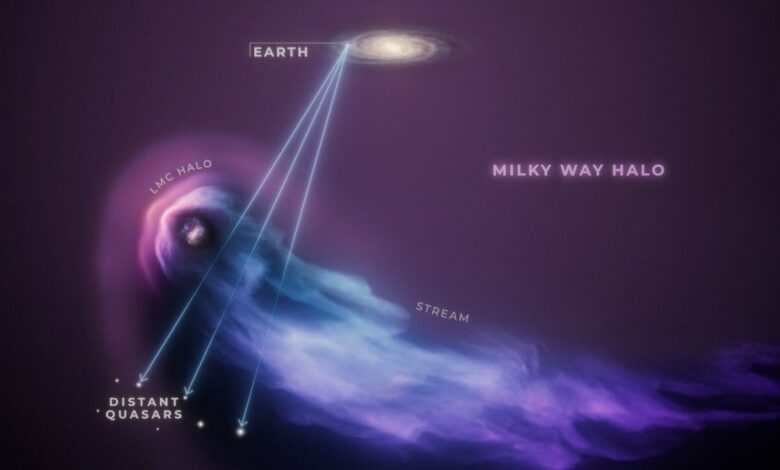Hubble telescope reveals the Milky Way is blowing gas from the LMC galaxy

NASA’s Hubble Space Telescope has revealed a dramatic cosmic interaction taking place on the outskirts of the Milky Way Galaxy. The Large Magellanic Cloud (LMC), a dwarf galaxy with about 10 percent of the Milky Way’s mass, has been observed to lose much of its gaseous halo. The phenomenon is attributed to the gravitational and environmental forces exerted by the Milky Way during the close approach to the LMC, as detailed by researchers led by Dr. Andrew Fox of the European Space Agency in Baltimore.
LMC’s Halo spreading observed
The study highlights the effect of ram pressure, a force created as the LMC moves through the dense gas halo of the Milky Way. This pressure has stripped away most of the LMC’s original gaseous halo, leaving only a compact remnant. Dr. Fox, the lead researcher, noted that although significant mass has been lost, the remaining halo is still visible, trailing behind the dwarf galaxy like a comet’s tail.
Survival and star formation potential
Despite this significant loss, the LMC retains enough material to support star formation. According to researchers, its relatively larger mass has allowed it to withstand the stripping forces. Dr. Fox said the LMC is a survivor. Smaller galaxies would not have retained their gas, resulting in a collection of aging stars without the opportunity for new ones. The trapped gas, although reduced, allows for the creation of new star-forming regions, keeping the galaxy active.
Scientific insights
The findings provide valuable insights into galactic interactions and the role of ram pressure in shaping galaxy evolution. While the Milky Way’s closest encounter with the Milky Way has passed, scientists predict that the remnants of its gas halo will eventually merge with the Milky Way’s own gas, enriching the galactic ecosystem.




